![[Introduction] Qt 6 Programming Part 2講義サムネイル](https://cdn.inflearn.com/public/courses/326823/cover/9c839f33-d59f-422a-9704-64534673a39c/커버이미지_Qt 6 프로그래밍_2편.png?w=420)
[Introduction] Qt 6 Programming Part 2
qtdev
This lecture is the second part of Qt Programming Part 1. If you are new to Qt, we recommend that you study Part 1 first and then Part 2.
入門
Qt, GUI
QML is a programming language for creating UIs provided by Qt. It is similar to JSON and can use JavaScript. Using QML instead of the C++ language, you can easily develop modern, advanced UIs without using C++.
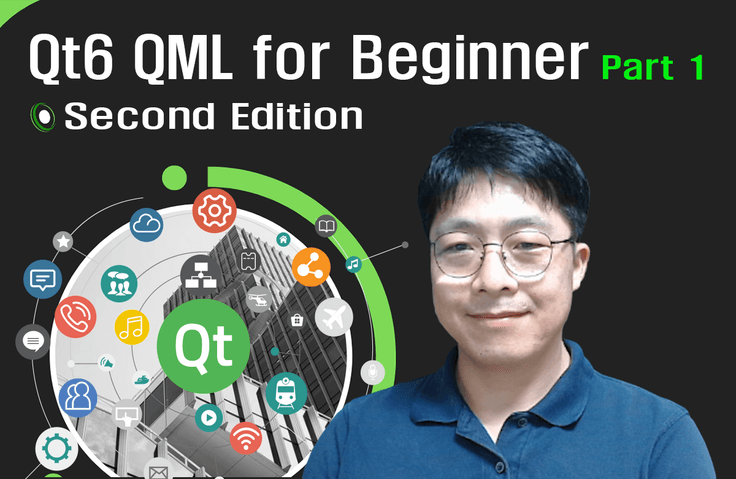
Developing Modern UI Using QML
UI development using QML and C++
QML for Qt UI development,
We will explain in detail from introduction to practice.
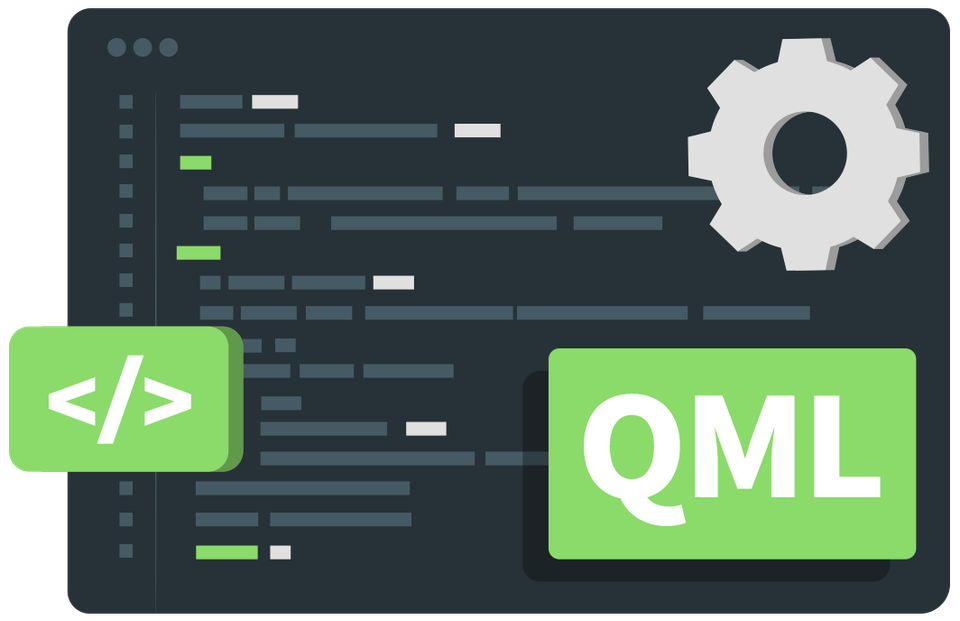
Modern, advanced UI in the Qt framework
It is a programming language that is easy to develop in.
QML (Qt Modeling Language) is a programming language provided by the Qt framework. QML is a programming language that can be used for UI development within the Qt framework, making it easy to implement modern, advanced UIs.
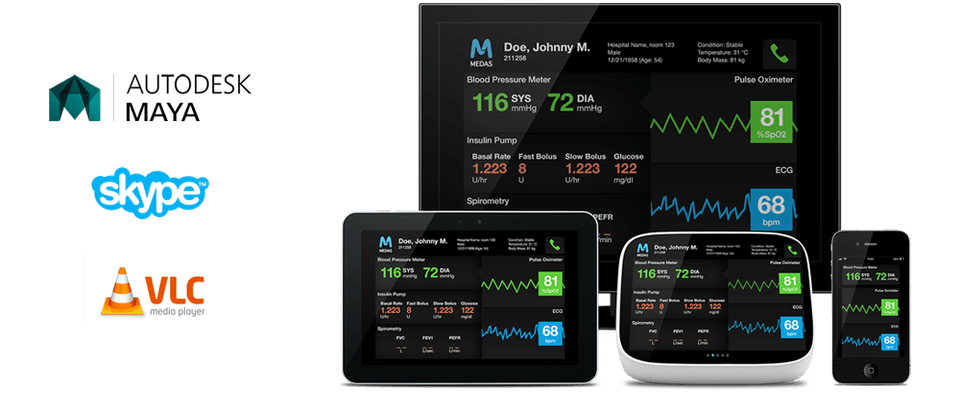
When developing GUI programs using the Qt framework, you can distinguish between the design logic of the UI and the functional logic of the functional portion. Among these, QML is a language of choice as an alternative to C++ when developing UIs that correspond to the design logic . Specifically, developing UIs with QML allows for a complete separation of design and functional logic, thereby increasing source code reusability.

Developing design logic using QML allows you to implement UIs much more easily and quickly than developing using C++. It also allows you to easily apply modern, advanced GUI technologies like Flickable, Gesture, Animation, and 3D.
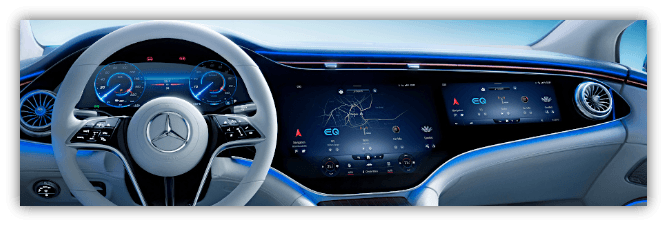
Let's look at a "Hello World" output example, a common example when first learning a programming language. It's easy to see how concise QML is.
import QtQuick Window { width: 300 height: 200 visible: true title: qsTr("QML 예제소스코드") Text { x: 80 y: 70 text: "Hello World" font.pixelSize: 25 } }QML example source code
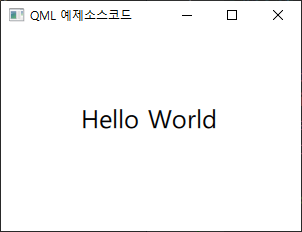
QML is simple and straightforward. Even non-developers can easily understand it. Therefore, designers and developers can communicate and share ideas using QML code.
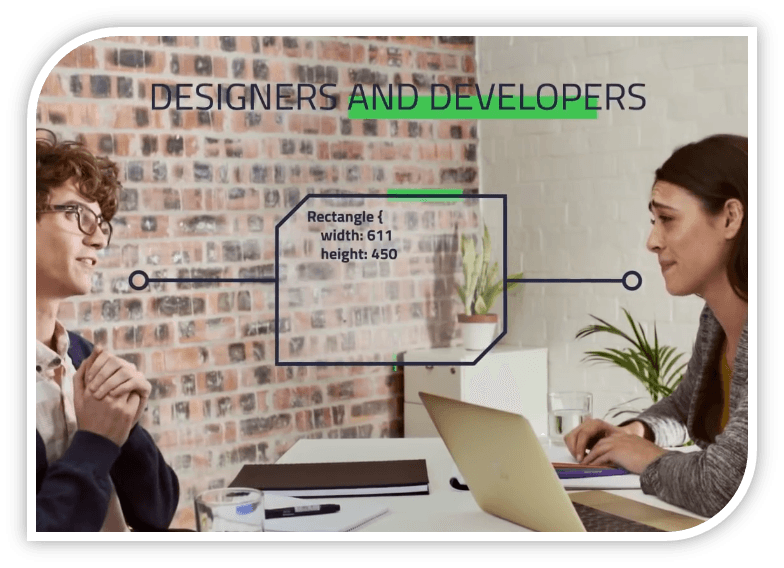
Therefore, QML allows designers and developers to collaborate using the same development tools , reducing development time compared to before.
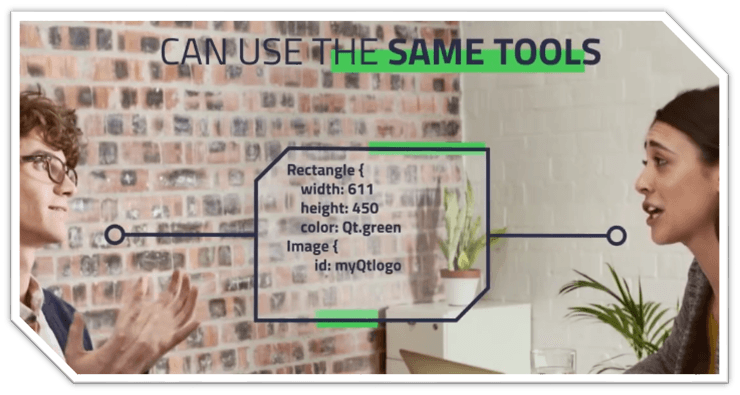
1️⃣
Anyone (developers, designers) who wants to easily implement modern, advanced UI/UX using QML in Qt
2️⃣
Those who want to increase source code maintainability and reusability by separating design logic and functional logic.
✅
You must have a basic understanding of the C++ language and Qt framework to take this course.
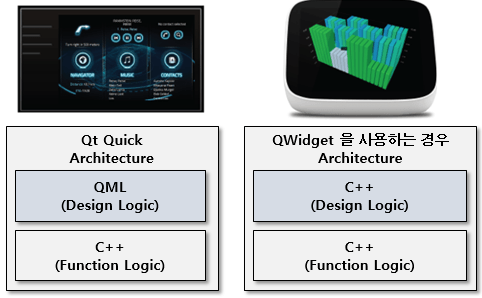
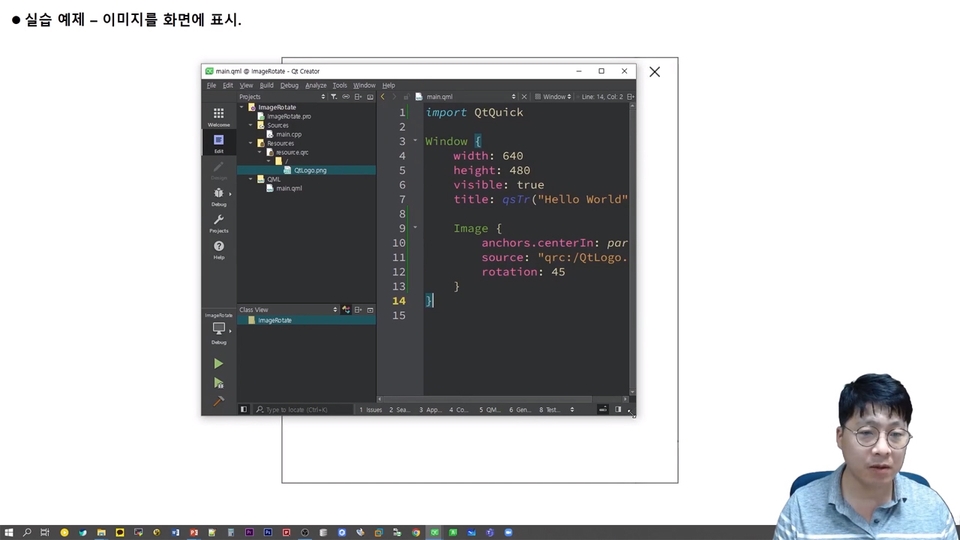
Theory and practice at once
In addition to QML grammar, the course is designed to enhance practical skills. After each section's theoretical study, you'll learn practical examples and practice them yourself, further enhancing your practical skills.
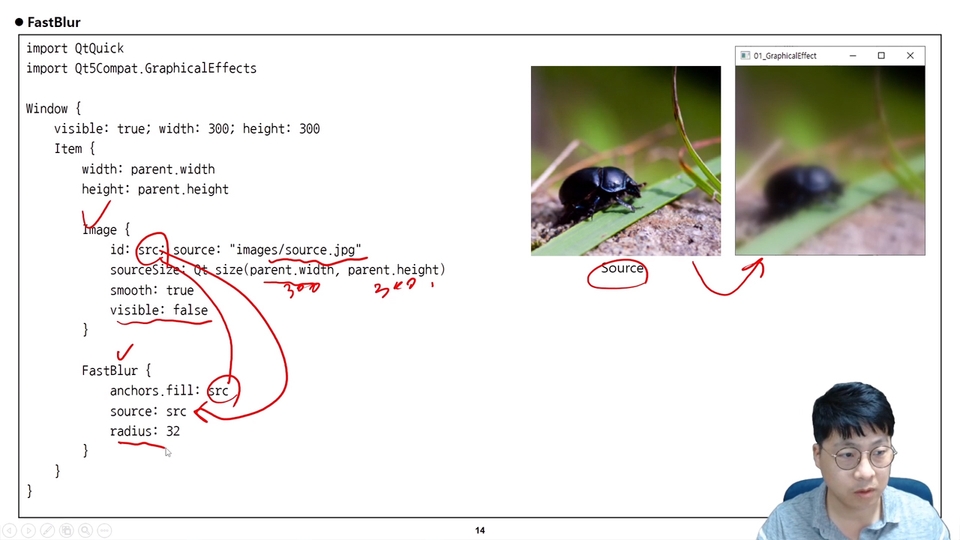
Beyond the online walls
We've captured the image of a knowledge sharer on the screen. Learn anytime, anywhere, as if you were taking an offline class, with vivid live coding.
Section 1. What is QML
QML is an interpreted language provided by the Qt Framework. In this lesson, we'll explore the features and advantages of QML. 
Section 2. QML Syntax and Structure
This section covers the structure and syntax of QML, and how to use QML through practical examples. 
Section 3. Type
Type is a concept similar to QWidget in Qt. In this section, we'll learn what Type is, focusing on the most frequently used types provided by QML. As a practical example, we'll implement a button type using the Accessible type and report on it. 
Section 4. Events
This section covers how to implement event handling for user interface events, such as touch, mouse, and keyboard input. You'll also learn how to implement signals in QML. In this hands-on example, you'll learn how to handle signals in detail through examples of connecting signals to methods (functions). 
Section 5. Implementing Dynamic UI using Loader type
You'll learn how to dynamically change specific areas of a UI. For example, you'll learn how to transition from GUI screen A to screen B when a certain condition is met. Therefore, in this section, you'll learn how to dynamically implement screens. The final hands-on example will demonstrate how to dynamically change screens using the Loader type. 
Section 6. Canvas
Learn how to display images, lines, shapes, and text on the screen, similar to a Paint program. As an example, let's cover how to draw in Paint using a color selection. 
Section 7. Graphic Effects
Learn how to use Effects such as Blur, Blend, Color, etc. on your images. 
Section 8. Module Programming
Learn how to modularize user-defined types, such as frequently used GUI modules like buttons and combo boxes. You'll also learn how to modularize and implement QML through hands-on examples. 
Section 9. Using JavaScript in QML
Learn how to use JavaScript functions in QML and how to import JavaScript files in QML. In this hands-on example, you'll learn more about using JavaScript by implementing a calculator. 
Section 10. Dialog
Learn how to use dialogs in QML. You'll also learn how to use them by implementing a hands-on example: a dialog for selecting a color. 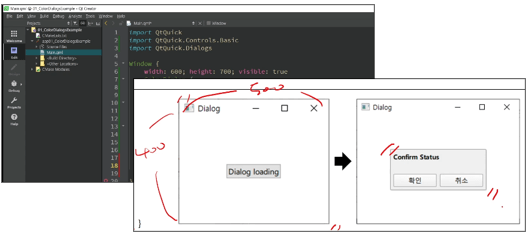
Section 11. Layout
In addition to Anchors, QML also supports Layouts such as RowLayout, ColumnLayout, GridLayout, and Layout. In this lesson, we'll learn how to use various Layouts. 
Section 12. Type Positioning
Type Positioning teaches you how to display types on screen. For example, you'll learn how to arrange types horizontally, vertically, or in a checkerboard pattern. 
Section 13. Qt Quick Controls
Qt Quick Controls provide the GUI interfaces needed to compose screens, including Buttons, Dials, CheckBoxes, and BusyIndicators. In this section, you'll learn how to use Qt Quick Controls. 
Q. In addition to theory and grammar, will I be able to access a variety of practical examples?
Yes, you can. After each section's theoretical lecture, you'll have a hands-on coding session with the instructor, working through examples. This allows you to learn practical programming skills using QML in the workplace.
Q. Are there any reference materials or textbooks for the lectures I am studying?
I'm an administrator for the Qt Developer Community ( qt-dev.com ). This site is a great resource for Qt and QML-related information.
Q. Is there anything I need to know before attending the lecture?
This course requires basic knowledge of C++ and Qt. If you have no experience with Qt, we recommend taking the previous "Qt Programming" course before taking this course.
Q. What level of content is covered in the class?
Covers everything from QML basics to advanced topics for various application areas.
💾 Note
Who is this course right for?
For those who want to develop UI using QML
For those who want to develop UI using QML in Qt framework
Need to know before starting?
C++
Qt
1,065
Learners
102
Reviews
104
Answers
4.7
Rating
9
Courses
근무경력
현: Embedded 분야 SW Team leader
LG전자, VS사업부 IVI선행플랫폼/모듈개발
SW마에스트로, SW 멘토
강의경력
삼성전자, Qt & QML 강의
LG전자, Qt & QML 분야 사내 강사
한컴아카데미 Qt 강의 출강
다수의 IT기업 Qt 강의 출강
저서
Qt 프로그래밍
Qt Quick 프로그래밍
Qt5 프로그래밍 가이드
MeeGo 프로그래밍 완벽 가이드
Qt 실전 프로그래밍
SW커뮤니티 운영
Qt 개발자 커뮤니티 운영자 ( www.qt-dev.com )
All
47 lectures ∙ (9hr 8min)
Course Materials:
All
16 reviews
4.8
16 reviews
Reviews 52
∙
Average Rating 5.0
5
It helped me a lot in how I will use QML in the future. I think it would be helpful to have a training course in the future that selects one practical item and implements the entire process, so that I can acquire the know-how.
Junghwan Jeong, thank you so much for your help. Thanks for the great feedback. In the next QML tutorial, I will add implementation of the entire process and include Qt Design Studio.
Reviews 2
∙
Average Rating 5.0
Reviews 3
∙
Average Rating 5.0
5
Instructor is the best!!!
Park Si-woo, thank you so much for the great review. :)
$29.70
Check out other courses by the instructor!
Explore other courses in the same field!